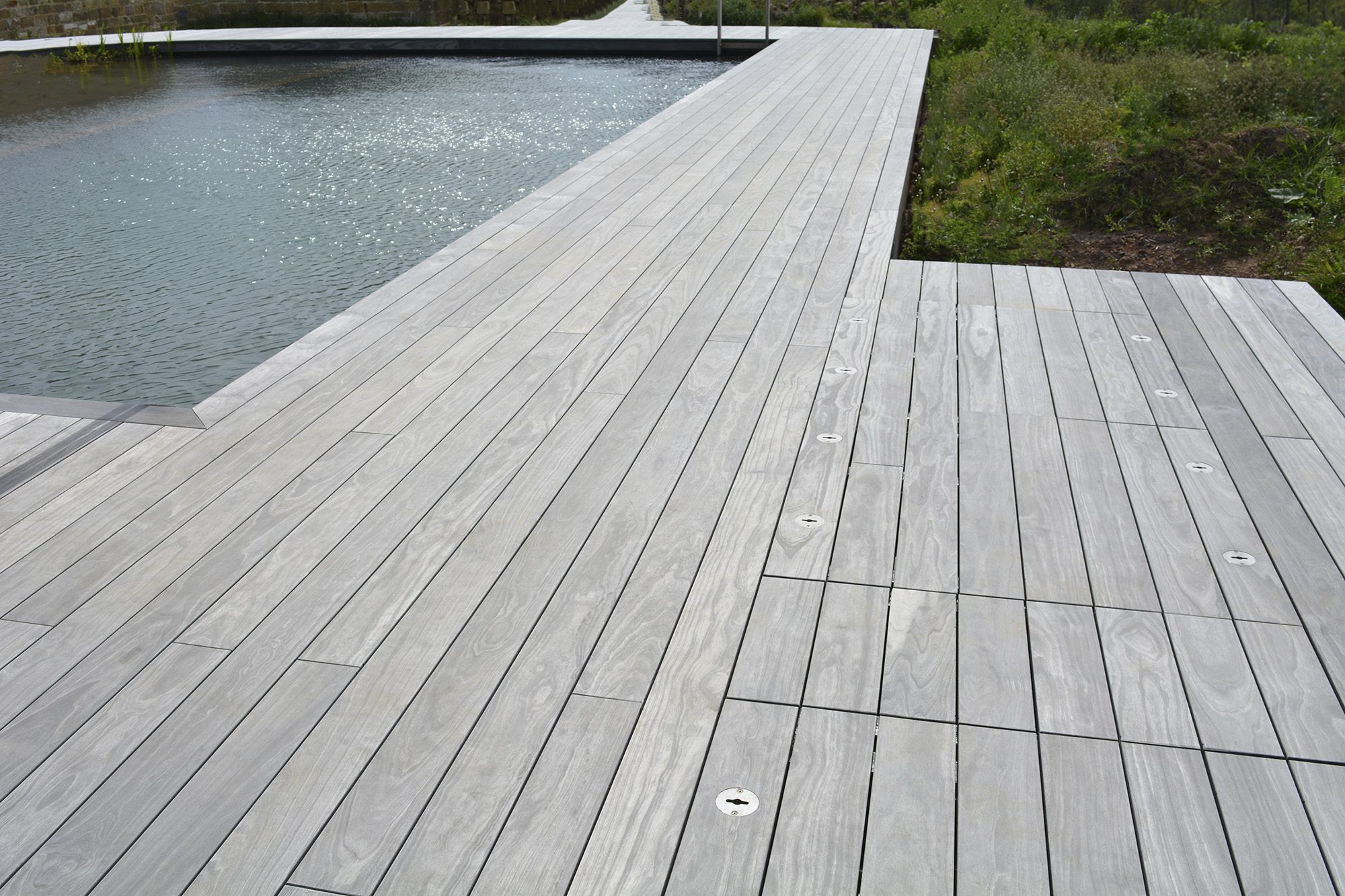Understanding the Innovative Wood Technology Behind Accoya® Wood
When you search online for “acetylation,” you’ll find academic journals and scientific entries explaining it in technical detail. But let’s skip the jargon of hydroxyls and hydrogen atoms. Simply put, acetylation—as it pertains to wood technology—is:
Modifying wood by treating softwood with a substance akin to vinegar, transforming it into a hardwood by preventing the cells in the wood from absorbing water.
So, Acetylated Wood Is… Pickled Wood?
In a way, yes!
The process uses acetic anhydride—not your typical malt vinegar for fish and chips. While the chemistry behind “turning wood into hardwood” is a bit complex, the concept is straightforward: the treatment alters the wood’s molecular structure, making it resistant to water absorption.
Is Acetic Anhydride Toxic?
In its raw, concentrated form, acetic anhydride is like a supercharged vinegar—not something you’d drizzle on your fries. But here’s the key: it’s not present in the final Accoya® wood product.
During production, acetic anhydride reacts with the wood, rendering its molecules resistant to water. Any leftover liquid is essentially vinegar, which we repurpose for other industries or recycle within our processes. This commitment to reuse aligns with our dedication to the circular economy and eliminating waste.
While you wouldn’t cook with concentrated acetic anhydride, it’s perfect for creating durable, non-toxic wood products that can last a lifetime.
Why Acetylate Wood?
The primary advantage of acetylation is how it prevents wood from absorbing water—a significant culprit behind wood deterioration.
Water is often the root cause of most wood problems:
- Rotting
- Warping
- Splintering
- Swelling and shrinking
- Insect damage
By removing water absorption from the equation, acetylation eliminates these issues at their source. Unlike traditional treatments that rely on toxic chemicals to combat rot or pests, acetylation offers a holistic solution:
Real wood that doesn’t rot, warp, swell, shrink, splinter, or attract termites.
The Benefits of Acetylated Wood
Because acetylated wood remains dimensionally stable, it maintains its original shape and size. This stability makes it ideal for coatings and significantly extends its durability. Accoya®, our branded acetylated wood, is the pinnacle of this technology, offering unparalleled performance:
- Unmatched Longevity: Perfect for decks, cladding, siding, windows, doors, fences, furniture, or even unique projects like wooden sculptures.
- Eco-Friendly and Sustainable: Sourced from sustainable plantations and featuring a low carbon footprint.
- Exceptional Performance: Outlasts traditional hardwoods like oak and teak, which are still susceptible to rot, warping, and splintering.
Isn’t This New Technology?
Surprisingly, no! Acetylation has been around for most of the 20th century. The challenge has been scaling it up for commercial production. Since around 2007, advancements have made large-scale acetylation possible, allowing us to bring this wonder material to the market.
Is It Sustainable?
Absolutely. Accoya wood comes exclusively from sustainable plantations, where trees are purposefully grown, increasing biomass and acting as a carbon sink. The acetylation process makes the Accoya wood more stable and longer lasting. This reduces the need to keep replacing less durable wood which further reduces the carbon footprint.
In Summary: What Is Acetylation?
At its core, acetylation is a chemical process. But for us, it represents so much more:
- Durability: Wood that outlasts traditional options.
- Peace of Mind: A product that resists rot, warp and bugs.
- Sustainability: An investment in our planet’s future.
Whether it’s for a deck, cladding, windows, or even a giant wooden octopus, Accoya® acetylated wood is the reliable, eco-friendly choice for lasting performance.
No water. No movement. No problem!
